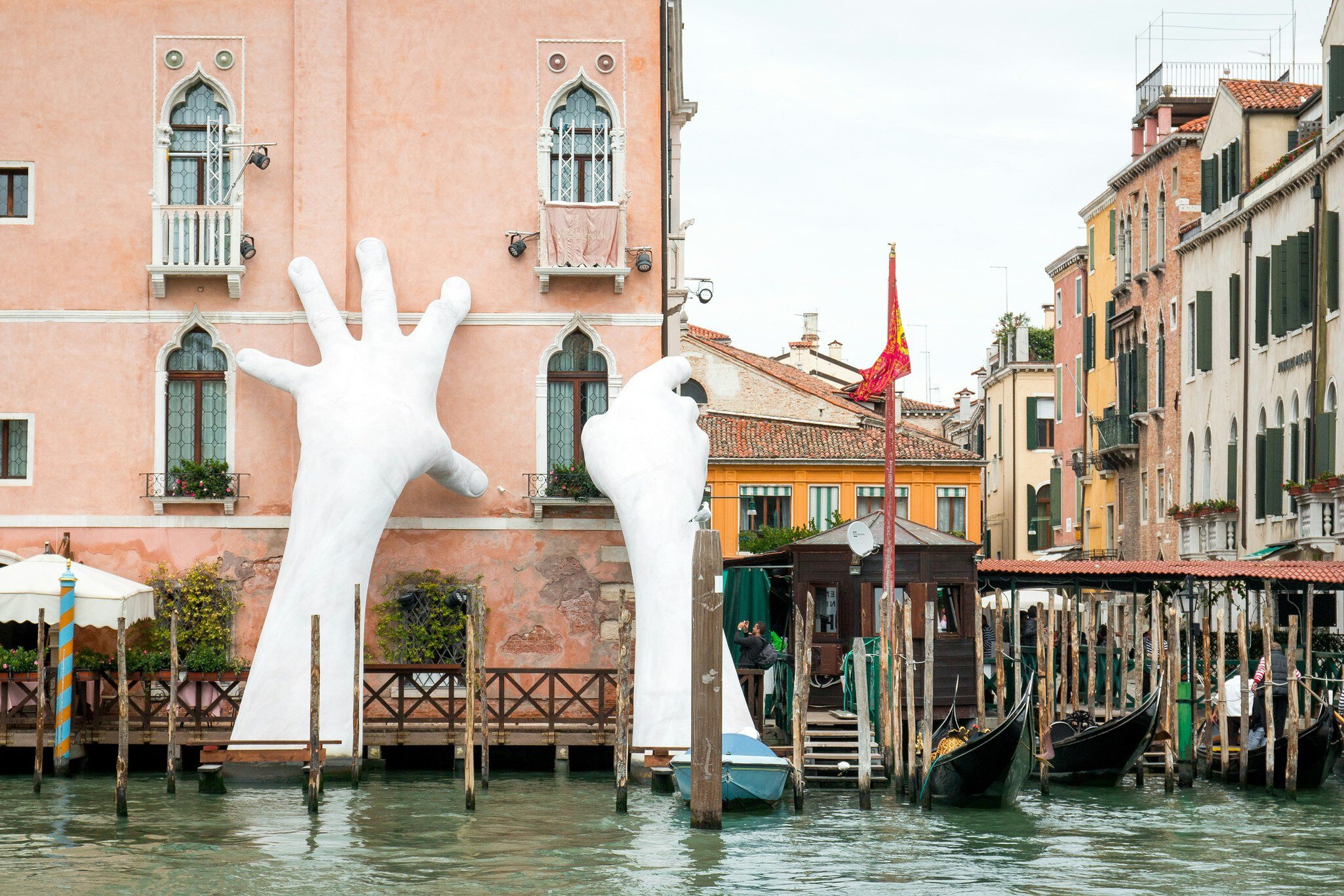Architecture in the age of adaptation: The Biennale di Venezia 2025 as a laboratory
Architecture has always been a discipline of resistance. From the first primitive shelter to the modern urban landscape, it has always been a response to a hostile environment—driven by the need to create space to live. But today, the challenge is more existential than ever. The climate crisis requires not just a rethink, but a paradigm shift. This is precisely where Carlo Ratti, curator of the 19th International Architecture Biennale in Venice, comes in. Under the title “Intelligens. Natural. Artificial. Collective.”, the 2025 Biennale invites us to understand architecture as a synthesis of the most diverse intelligences—as a discipline that relies not only on artificial intelligence and digital technologies, but also on the wisdom of nature, collectives and the sciences.
Architecture in climate change: adaptation instead of just mitigation
‘The architecture's previous strategy to combat the climate crisis was mitigation - reducing our impact on the environment,’ explains Ratti. ‘But that's no longer enough. We have to learn to adapt.’ This realisation is the starting point for a biennial that no longer sees architecture as a static manifestation of design, but as a flexible, living system. The record temperatures of 2024, the increasingly frequent fires, floods and droughts show that we can no longer rely on stable environmental conditions. The central question is therefore: How can architecture endure in a radically changing world?


Intelligence as a model
The Biennale sees itself as a laboratory. Over 750 participants from the fields of architecture, science, art and crafts are invited to try out new forms of building. The aim is to renegotiate authorship: while the architect has often been the sole creator in the past, Ratti proposes a collaborative model that is orientated towards scientific research. Architecture here becomes a discipline of the collective.
The exhibition is divided into three main thematic areas:
Natural Intelligence, Artificial Intelligence and Collective Intelligence.
Natural Intelligence examines how building processes can be inspired by ecosystems—be it through the rediscovery of traditional craft techniques or the use of biodegradable materials such as banana fibres or bioconcrete. Artificial Intelligence sheds light on the potential of new technologies: from robotics in the construction industry to the digital reconstruction of destroyed cities. The area of Collective Intelligence focuses on informal building practices and collaborative planning processes—from the markets in Lagos to the favelas in Rio de Janeiro.
The Corderie dell'Arsenale: the pulsating centre of the Biennale
The centrepiece of the exhibition is the Corderie dell'Arsenale, in which a large number of projects are presented in a modular, networked spatial concept. Digital levels expand the exhibition and enable new forms of dialogue. The spatial concept reflects the basic idea of the Biennale: architecture as a dynamic network in which large and small players are interwoven. However, the Biennale is not limited to the exhibition space. As the central pavilion in the Giardini 2025 is being renovated, Venice itself will become a field for experimentation. Installations, prototypes and urban interventions will turn the city into a living laboratory for architectural research.


Architecture as an experiment
The Biennale 2025 is not an exhibition in the classic sense - it is a hypothesis, an experiment, an open question. Some answers will be convincing, others will fail. But its value lies precisely in this openness. Because in a world that is changing faster than ever, architecture must also learn to change. Intelligens is an appeal to understand architecture not as a finished product, but as a process—as a constant negotiation between nature, technology and society.
Curators of the German Pavilion selected
The curatorial team for the German contribution to the 19th Architecture Biennale in Venice 2025 has been selected: Prof. Elisabeth Endres, Prof. Dr Daniele Santucci, Nicola Borgmann and Prof. Gabriele G. Kiefer—the team will realise the exhibition “STRESSTEST”, which will focus on the effects of overheating on cities and infrastructures. The aim is to make the urgency of this issue tangible and to demonstrate solutions for climate-adapted urban development.
In its contribution, TEAM STRESSTEST takes up the topic of adapting our built environment to overheating, which is much discussed in politics and among experts. The curators want to make the urgency of this issue tangible for visitors to the German pavilion. What effects does heat have on our lives in public spaces? How can we protect ourselves against heat and implement climate-adapted urban development? The German government is addressing these questions in its heat protection strategy. I am delighted that the German Pavilion 2025 is dedicated to this important and socially highly relevant topic.
Carlo Ratti at BAU 2025
At the beginning of the year, Carlo Ratti, curator of this year's International Architecture Biennale, was a guest at BAU. In his lecture “Senseable Cities”, he gave exciting insights into the future of architecture and discussed how technology, sustainability and collective intelligence will characterise building in the coming decades. You can find a short summary of his lecture in the video.
Prof Carlo Ratti is an architect, engineer and visionary in the field of urban planning and technology. He heads the Senseable City Laboratory at the Massachusetts Institute of Technology (MIT), where he researches the interfaces between urban life and digital technologies. As founder of the design firm Carlo Ratti Associati, he realises innovative projects that create sustainable and intelligent solutions for the built environment. Ratti is known for his work on integrating the Internet of Things into cities and buildings. According to Forbes, he is one of the ‘50 most influential people in the world shaping the future’, and his work has been presented in leading exhibitions around the world, including the Biennale di Venezia and the MoMA.
19th Venice International Architecture Biennale
- Duration: 10 May - 23 November 2025
- Title: Intelligens. Natural. Artificial. Collective.
- Curator: Carlo Ratti
Further information on the 19th Venice Architecture Biennale 2025 can be found here.
